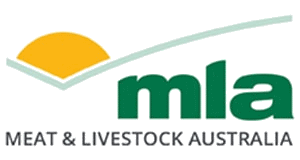PDS: Improving survival of triplet dams and their lambs
| Project start date: | 01 October 2024 |
| Project end date: | 30 September 2031 |
| Project status: | In progress |
| Livestock species: | Sheep, Lamb |
| Relevant regions: | Southern Australia |
| Site location: | Northwest VIC, Southwest VIC and Southest SA |
Summary
Currently, there is a big emphasis on lifting scanning rates that result in more triplets, but a lack of focus is placed on ewe and lamb survival from the triplet cohort, which, if not managed well, can be very challenging. This PDS will demonstrate to producers how to effectively balance the production opportunities of triplets, with mitigation of the welfare risks associated, with a particular focus on triplet ewe and lamb survival rates.
The project engagement, extension, and evaluation will focus on the number of live ewes and lambs at lamb marking produced from ewes that conceive triplets rather than focusing on scanning rates as the endpoint.
This Co-Contributor PDS aims to demonstrate best practice management of triplet dams and their lambs to improve both production and welfare outcomes by lifting ewe and lamb survival rates, resulting in at least a doubling in the number of producers pregnancy scanning to identify triplets and manage them separately to optimise performance.
Objectives
By 2030, for 3 regional groups (northeast Vic, southwest Vic and southeast SA), 12 (4 per region) demonstration sites, engaging a minimum of 30 core producers, 60 observer producers, and 20 pregnancy scanners will be established to;
- Demonstrate and assess the impact (productivity and profitability) of best practice triplet management on the survival of triplet dams and their lambs, including;
- the impact of ewe condition at lambing on triplet ewe and lamb survival rates,
- the impact of late pregnancy grain feeding on triplet ewe and lamb survival rates,
- the impact of triplet lambing mob size on lamb survival rates, and
- semi-intensive lambing of triplets (mobs of less than 10, with access to lambing shelters for first 2 days after birth) compared to lambing triplets in more conventional paddocks, all outdoors.
- Implement a series of skills training and development activities throughout the PDS to increase the knowledge, skills and confidence of the core producers, the wider Lambs Alive group (observers) and local pregnancy scanners on best practice management of triplet dams and their lambs; as a result, 80% of both core producers and observer producers will have increased their knowledge skills and confidence.
- Conduct an annual industry field day to showcase the demonstration site results to build producer community awareness and encourage adoption of best practice triplet management among a total of at least 200 attending producers over the 6 years (total participation inc. core and observer producers),
- Deliver once for each region (biennially) a Scanner Showcase demonstrating to local pregnancy scanners best practice identification and management of triplet bearing ewes involving host producers,
- To have 75% of core producers and 50% of observer producers adopting best practice triplet management.


